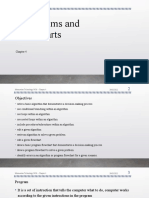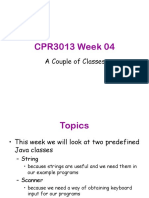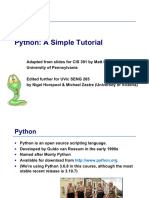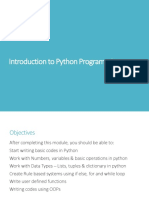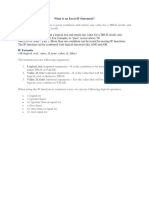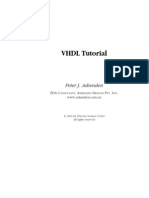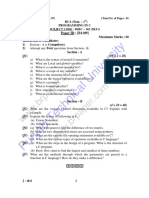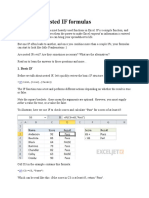Complete Python Notes — All Topics You Asked
(Class 11)
These notes cover everything you asked in the chat: Python basics, data types, escape sequences, punctuators,
keywords, operators (all kinds), type() and conversions, sequences, slicing & range (special focus), control
statements (if/else/elif/nested), loops (for/while/fixed & unfixed iteration), break/continue/else with loops,
augmented assignment, nested loops, strings (assignment, traversal, slicing, built-in functions) and practical
examples. Detailed definitions, examples, common errors and exam/viva tips are included.
1. Quick Introduction & Running Python
What is Python? - High-level, interpreted, general-purpose language. Readable, dynamically typed, and
widely used.
Running Python programs - IDLE (Python’s default editor): Create file → Save as filename.py → Run
Module (F5). If F5 does nothing, make sure file is saved and you're in IDLE editor. Some laptops require
Fn+F5 for function keys. - Terminal / Command Prompt: python filename.py or py
filename.py . - Other editors/IDEs (VS Code, PyCharm) have their own Run settings — F5 may be
mapped differently.
Troubleshooting if F5 isn’t running in IDLE: - Ensure the file is saved with .py extension. - Open file in
IDLE (right-click → Open With → IDLE). - If python --version fails in terminal, Python may not be
installed or PATH not set.
2. Identifiers, Keywords & Punctuators
Identifier (variable/function/class names) - Rules: Can contain letters (a–z, A–Z), digits (0–9) and
underscore _ . - Cannot start with a digit. - Case-sensitive ( age ≠ Age ). - Cannot be a keyword.
Keywords - Reserved words that have special meaning and cannot be used as identifiers. Examples:
False , True , None , and , or , not , if , else , elif , for , while , break , continue ,
class , def , return , import , from , in , is , lambda , with , try , except , finally ,
pass , raise , global , nonlocal , yield , etc. - Example: class = 5 is invalid because class is
a keyword used to define classes.
Punctuators (symbols used in syntax) - () parentheses — function calls, tuple creation, order of
operations. - [] square brackets — lists, indexing, slicing. - {} curly braces — dictionaries and sets
(literal syntax). - : colon — start of an indented block (after if , for , def , class , etc.) and used in
dicts. - , comma — separator for items. - . dot — attribute or method access (e.g., str.upper ). - =
1
assignment operator. - ; statement separator (rare in Python; usually avoided). - _ underscore — valid in
identifiers and special names like __init__ .
3. Escape Sequences (in strings)
Escape sequences are special character combinations starting with a backslash \ used inside strings.
Common escape sequences: - \n → newline - \t → tab - \\ → backslash - \' → single quote - \" →
double quote - \r → carriage return (rarely used) - \b → backspace (removes previous char)
Examples:
print("Hello\nWorld") # prints Hello then newline then World
print('It\'s OK') # prints It's OK
print("C:\\Users\\Drishti") # prints C:\Users\Drishti
4. Data Types — Definitions, Properties &
Examples
Data type: classification of data that tells Python what operations are allowed on that data and how it is
stored.
4.1 Basic (Atomic) Data Types
• int — integers: 0 , -5 , 100 .
• float — floating-point numbers (decimals): 3.14 , -0.5 .
• complex — complex numbers: 3+5j (real + imag * j).
• bool — boolean values: True or False (internally 1 and 0 ).
• str — string: sequence of characters: 'hello' , "Python" .
• NoneType — single value None representing no value.
Check type:
x = 10
print(type(x)) # <class 'int'>
2
4.2 Collection Types (Sequences & Mappings)
• list — ordered, mutable collection: [1, 2, 'a'] .
• tuple — ordered, immutable collection: (1, 2, 3) .
• set — unordered, unique elements: {1, 2, 3} .
• dict — key-value mapping: {'name': 'Drishti', 'age': 15} .
• range — immutable sequence of numbers (commonly used in loops).
• str is also a sequence (immutable) of characters.
Mutability - Mutable: list, set, dict (you can change contents in place). - Immutable: int, float, bool, str, tuple,
range (you can't change the object; you can create a new one).
Important built-ins: len() returns length, min() , max() , sum() (on numeric sequences), indexing
seq[index] and slicing seq[start:stop:step] .
5. type() , id() and isinstance()
• type(obj) → returns the data type/class of obj .
• id(obj) → returns a unique integer (address in CPython) that identifies object in memory.
• isinstance(obj, Class) → checks if obj is instance of Class (useful for type checking).
x = 10
print(type(x)) # <class 'int'>
print(id(x)) # some integer (memory id)
print(isinstance(x,int))# True
6. Type Conversion (Casting)
6.1 Implicit Conversion (Coercion)
• Python sometimes converts smaller/compatible types to bigger ones automatically (e.g., int +
float → float ).
x = 5 # int
y = 2.5 # float
z = x + y # z becomes float: 7.5
6.2 Explicit Conversion (Casting)
• Use functions: int() , float() , complex() , str() , bool() .
3
int(3.9) # 3
float(5) # 5.0
int('10') # 10
str(12) # "12"
complex(2,3) # (2+3j)
Note: input() returns a string — convert to int or float when needed.
7. Operators (Complete Breakdown)
An operator performs operations on values/operands. Python supports many operator types.
7.1 Arithmetic Operators
• + addition
• - subtraction
• * multiplication
• / division (always float)
• // floor division (quotient, integer part)
• % modulus (remainder)
• ** exponentiation (power)
Examples:
5 + 3 # 8
10 / 3 # 3.333333... (float)
10 // 3 # 3
10 % 3 # 1
2 ** 4 # 16
7.2 Relational (Comparison) Operators
• < , > , <= , >= , == (equality), != (not equal)
• Result is True or False .
5 > 2 # True
5 == 5 # True
7.3 Logical Operators
• and , or , not operate on boolean expressions.
4
(5>2) and (3<4) # True
not (5>2) # False
7.4 Assignment Operators
• = basic assignment.
• Augmented assignment operators: combine an operation with assignment:
• += -= *= /= //= %= **=
Example:
x = 10
x += 5 # now x = 15
x *= 2 # now x = 30
Augmented operators work with mutables too — with lists you can do lst += [4] which modifies in
place.
7.5 Membership Operators
• in , not in — test membership in sequences or containers.
"a" in "apple" # True
3 in [1,2,3] # True
7.6 Identity Operators
• is , is not — check whether two references point to the same object (same memory id), not
just equal value.
x = [1,2]
y = x
z = [1,2]
print(x is y) # True
print(x is z) # False
7.7 Operator Precedence (important for expressions)
• Operators have precedence; arithmetic ** highest (among arithmetic), then * / // % , then +
- , then relational, logical. Use parentheses () to control evaluation.
Example:
5
2 + 3 * 4 # 14 (multiplication before addition)
(2 + 3) * 4 # 20
8. Augmented Assignment Operators (Detailed)
Definition: shorthand for performing operation and assignment in one step.
List & equivalent: - x += y → x = x + y - x -= y → x = x - y - x *= y → x = x * y -
x /= y → x = x / y (float division) - x //= y → x = x // y (floor division) - x %= y →
x = x % y - x **= y → x = x ** y
Notes: - For mutable objects (lists, dicts), += often modifies in place instead of creating a new object. -
Useful in loops for counters and accumulators.
Example:
sum = 0
for i in range(1, 6):
sum += i
print(sum) # 15
9. Sequences (definition & types)
Sequence: an ordered collection of elements that can be indexed and sliced.
Common sequence types: - str — immutable sequence of characters. - list — mutable sequence. -
tuple — immutable sequence. - range — immutable sequence of numbers (useful with for ).
Common operations on sequences: - Indexing: seq[i] (0-based). Negative indexing allowed: seq[-1]
last element. - Slicing: seq[start:stop:step] (returns same type for list/tuple/str — a sub-sequence). -
Concatenation + , repetition * , membership in .
10. Slicing — In-Depth (Special focus)
Definition: Slicing extracts part of a sequence returning a new sequence of the same general type
(string→string, list→list, tuple→tuple).
6
Syntax: sequence[start:stop:step] - start (inclusive) default 0 if omitted (or len+start if
negative). - stop (exclusive) default len(sequence) if omitted. - step default 1 . If step is
negative, slicing goes backwards.
Important properties: - start index included; stop index excluded. So a[0:3] includes indices
0,1,2 . - Values out of bounds are handled gracefully (no IndexError on slicing) — slicing truncates to
sequence boundaries. - a[:] returns a shallow copy (for mutable sequences). - Reversing a sequence:
a[::-1] .
Examples:
s = "PYTHON"
print(s[0:3]) # 'PYT' (0,1,2)
print(s[:4]) # 'PYTH' (start omitted)
print(s[2:]) # 'THON' (stop omitted)
print(s[::2]) # 'PTO' (every 2nd character)
print(s[::-1]) # 'NOHTYP' (reverse string)
print(s[-3:-1]) # 'HO' (negative indices)
Slicing with lists:
lst = [10,20,30,40,50]
print(lst[1:4]) # [20, 30, 40]
print(lst[::-1]) # [50, 40, 30, 20, 10]
Common exam/viva points: - Remember the stop is excluded. A common error is to expect inclusion. -
Reversal: seq[::-1] — very useful trick. - Step value can be any non-zero integer; negative reverses
direction.
11. range() — Deep Dive (Special focus)
range() produces an immutable sequence of numbers and is memory efficient. Often used with for
loops.
Forms: - range(stop) — numbers from 0 to stop-1 . - range(start, stop) — numbers from
start to stop-1 . - range(start, stop, step) — uses step increment (can be negative for
descending sequences).
Behavior notes: - stop is exclusive. - range(5) is equivalent to 0,1,2,3,4 . - range(2, 8, 2)
produces 2,4,6 .
7
Step and omitting expressions: - Omitting start defaults to 0 . - Omitting step defaults to 1 . -
Negative step (e.g., range(10, 0, -2) ) counts down: 10,8,6,4,2 .
Examples:
for i in range(5): print(i) # 0..4
for i in range(2, 7): print(i) # 2..6
for i in range(1, 10, 2): print(i) # odd numbers 1..9
for i in range(10, 0, -2): print(i) # 10,8,6,4,2
Practical uses: - Looping fixed number of times, indexing into lists, generating sequences for patterns.
12. Control Flow — if , if-else , if-elif-else ,
nested if
Decision making lets the program run different code paths.
12.1 if statement
if condition:
statements
- If condition evaluates to True , the indented block runs; otherwise skipped.
12.2 if-else statement
if condition:
# True block
else:
# False block
12.3 if-elif-else statement
if cond1:
# block1
elif cond2:
# block2
8
elif cond3:
# block3
else:
# fallback
- Python evaluates top to bottom and runs the first True block only.
12.4 Nested if (if inside if)
• Used when decisions depend on previous decisions.
if age >= 18:
if citizen == 'Indian':
print('Can vote in India')
else:
print('Cannot vote in India')
else:
print('Too young')
Important: Indentation matters — Python uses indentation to group statements.
13. Loops — for , while , Break, Continue, else
with loops, Finite vs Infinite, Interconversion
13.1 Concept: Fixed vs Unfixed Iteration
• Fixed iterative loop: number of iterations known or controlled — use for (with range ).
• Unfixed iterative loop: iterate until a condition becomes False — use while .
13.2 for loop (fixed iterations)
for item in sequence:
statements
- Iterate over any sequence — list, tuple, string, range. Commonly used with range() for numeric
sequences.
13.3 while loop (unfixed iterations)
9
while condition:
statements
- Condition is evaluated before each iteration. - Must ensure condition will become False at some point to
avoid infinite loop, unless infinite is intended.
13.4 break
• Immediately exits the innermost loop.
for i in range(1,10):
if i == 5:
break
print(i) # prints 1..4
13.5 continue
• Skips rest of current iteration, proceeds to next iteration.
for i in range(1,6):
if i == 3:
continue
print(i) # prints 1 2 4 5
13.6 else with loops
• else block after a loop runs only when the loop finishes normally (no break ).
for i in range(3):
print(i)
else:
print("Done") # prints Done because loop ended normally
for i in range(3):
if i == 1:
break
else:
print("Will not print") # else not executed because break occurred
13.7 Finite vs Infinite loops
• Finite: loop has a condition or iteration that will eventually stop.
10
• Infinite: loop with condition always true ( while True ) or never updated variable — program runs
forever until externally stopped (or break used inside).
Example of infinite loop:
while True:
print("Hello") # runs forever unless break used
13.8 Interconversion of loops
• Any for loop can be rewritten using while and vice versa by manually handling loop variable
and increment.
for → while example:
for i in range(1,6):
print(i)
# Equivalent while
i = 1
while i <= 5:
print(i)
i += 1
14. Nested Loops — Elaborately
Definition: A loop inside another loop. For each iteration of the outer loop, the inner loop runs completely.
Use cases: building patterns (stars/digits), tables, matrix traversal, pairwise comparisons.
Example:
for i in range(3): # outer
for j in range(2): # inner
print(f"i={i}, j={j}")
Output order shows inner loop completes for each outer iteration.
Nested loops with break/continue: - break in inner loop only breaks inner loop; you can use flags or
break from outer using exceptions or additional conditions.
11
Patterns (classic examples): Right-angle triangle of * :
n = 5
for i in range(1, n+1):
for j in range(i):
print('*', end=' ')
print()
Multiplication table for 1..n (matrix style):
n = 5
for i in range(1, n+1):
for j in range(1, 11):
print(i*j, end='\t')
print()
15. Strings — Assignment, Traversal, Slicing, Built-
in Methods
15.1 Assigning strings
• Strings can be defined with single '...' , double "..." , or triple quotes '''...''' /
"""...""" (multi-line).
s1 = 'hello'
s2 = "Python"
s3 = '''This is
multi-line'''
15.2 Traversing strings (character by character)
Using for loop:
s = "Drishti"
for ch in s:
print(ch)
Using while loop with index:
12
s = 'Python'
i = 0
while i < len(s):
print(s[i])
i += 1
15.3 String indexing & slicing (recap)
• s[index] access single character.
• Negative indices allowed: s[-1] last char.
• Slicing: s[start:stop:step] — returns substring.
Examples:
s = "PROGRAM"
print(s[0]) # 'P'
print(s[-1]) # 'M'
print(s[1:4]) # 'ROG'
print(s[::-1])# reversed
15.4 Built-in string methods (common & useful)
• s.upper() → uppercase
• s.lower() → lowercase
• s.title() → title case (first letter capitalized for words)
• s.capitalize() → only first character capitalized
• s.strip() → remove leading/trailing whitespace
• s.lstrip() , s.rstrip() → left/right strip
• s.split(sep) → returns list of substrings
• sep.join(list_of_strings) → join with separator
• s.replace(old, new) → replace occurrences
• s.find(sub) → index of first occurrence or -1 if not found
• s.count(sub) → number of occurrences
• s.isalpha() , s.isdigit() , s.isalnum() → checks for alphabetic, digits, alphanumeric
• s.startswith(prefix) , s.endswith(suffix) → boolean checks
• ord(ch) → numeric Unicode code point for a character
• chr(code) → character for Unicode code point
Examples:
s = " Hello World "
print(s.strip()) # "Hello World"
13
print("apple,banana".split(',')) # ['apple', 'banana']
print("hello".upper()) # 'HELLO'
print("abc123".isalnum()) # True
16. Practice Examples & Small Programs (with
explanation)
16.1 Multiplication table (any size)
n = int(input("Enter number for table: "))
limit = int(input("Up to which multiple? "))
for i in range(1, limit+1):
print(f"{n} x {i} = {n*i}")
16.2 Table of tables (1 to n, each up to 10)
n = int(input("Enter n: "))
for i in range(1, n+1):
for j in range(1, 11):
print(i*j, end='\t')
print()
16.3 Reverse a string using slicing
s = input("Enter string: ")
print(s[::-1])
16.4 Count vowels in a string (traversal)
s = input("Enter text: ").lower()
vowels = 'aeiou'
count = 0
for ch in s:
if ch in vowels:
count += 1
print("Vowel count:", count)
14
16.5 Use break & else with a loop: search element
arr = [10, 25, 40, 55]
key = 25
for x in arr:
if x == key:
print("Found")
break
else:
print("Not Found")
17. Common Errors, Pitfalls & Tips (Exam/Viva
Friendly)
Common mistakes: - Using keywords as identifiers ( class , if , for ). - Forgetting that stop in
slicing/range is exclusive. - Trying to modify immutable types (e.g., s[0] = 'H' for string) - Not
converting input string to integer before arithmetic ( int(input()) ). - Index out of range when trying to
access invalid index (but slicing is safe). - Infinite loops due to not updating loop variables in while . -
Confusing is and == — is checks identity (same object), == checks value equality.
Good habits: - Use meaningful variable names. - Keep consistent indentation (4 spaces is common). - Use
comments to explain logic for complex parts. - Use functions ( def ) to modularize repeated code. - Test
code with edge cases (empty lists, zero, negative steps).
Viva tips: - Be ready to explain why a[::-1] reverses a sequence (step = -1 means start from end moving
backwards). - Show the difference between list[:] and list (copy vs reference) — list[:] returns
a shallow copy. - Explain range(1,6) gives 1..5 because stop is excluded.
18. Short Practice Set (Self-test)
1. What is output of print("abc"[::-1]) ?
2. How to generate even numbers from 2 to 20 using range() ?
3. Write if-elif-else to print grade for marks 0–100.
4. How does continue differ from break ?
5. Write a nested loop to print a 5x5 star square.
6. Convert string '45.6' to float and then to int — what happens?
7. What does len([1,2,3][:2]) return?
8. Explain difference between is and == with an example.
(Answers are easy to verify by trying in IDLE — practice is the fastest way to learn.)
15
19. Final Notes & How I can help next
• These notes are comprehensive for Class 11 basics and cover every topic you asked in the chat.
• If you want, I can:
• Convert these into a printable PDF or a one-page mindmap.
• Create a practice worksheet with solutions (code + explanation).
• Make a flowchart-style visual for control-flow and loops.
Good luck, Drishti — tell me which extra format (PDF / worksheet / mindmap) you want and I’ll prepare it
next.
16











